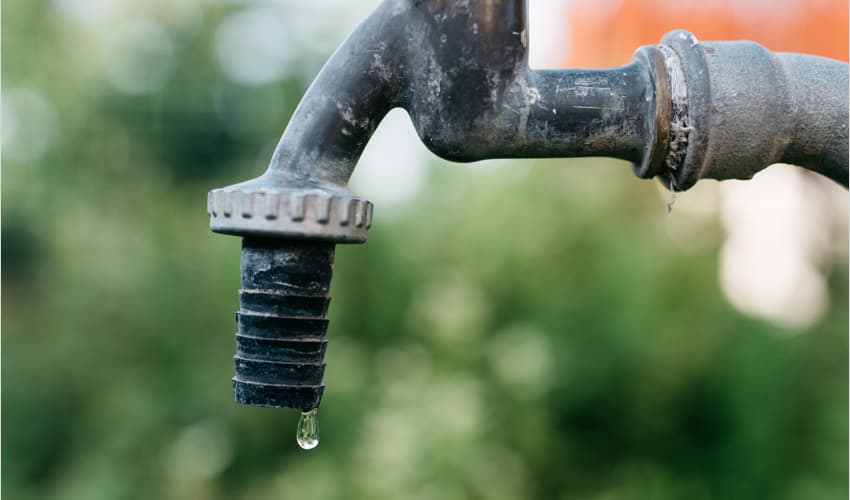What're your concepts on Most Common Causes of Leaky Pipes?

Leakages not only trigger waste of water however can additionally trigger unneeded damage to your home as well as promote unwanted organic growth. Unfortunately, water leaks might go unnoticed considering that the majority of the pipework in our home is hidden. By looking and understanding for daily circumstances that cause leakages, you can shield your home from future leaks and unnecessary damages. Today, we will certainly look at 6 leak creates that may be creating your pipelines to drip.
Elbowing in roots
The majority of water leakages begin outside the house rather than inside it. You could discover damp patches or sinkholes in your backyard, and that might indicate that tree roots are getting into water lines triggering water to seep out.
Rusty water systems
This might be the cause of staining or bending on your water pipelines. If our plumbing system is old, consider replacing the pipelines since they are at a greater threat of rust than the newer models.
Defective Pipeline Joints
The point at which your pipelines connect is regularly the weakest link in the waterline. Pipe joints can degrade over time, leading to water leaks. Regrettably, the majority of pipeline joints are not easily noticeable. If you have loud pipelines that make ticking or banging noises, particularly when the hot water is turned on, your pipe joints are probably under a lot of stress. It is advisable to have your plumber check your system once a year.
Immediate temperature level changes.
Extreme temperature changes in our pipes can create them to expand and get suddenly. This expansion and contraction might cause splits in the pipelines, especially if the temperature are below freezing. If you kept an eye on how your plumbing functions, it would certainly be best. The presence of the previously pointed out circumstances regularly indicates a high danger.
Poor Water Connectors
Sometimes, a leak can be caused by loose pipes and pipes that provide your devices. Generally, shifting is what causes the loosened water Connections. You could find when it comes to a washing maker, a tube may spring a leak due to drinking during the spin cycle. In case of a water links leak, you may observe water running straight from the supply line or pools around your home appliances.
Clogged Drains
Blocked drains might be bothersome as well as inconveniencing, but they can sometimes end up triggering an overflow causing burst pipelines. Keep eliminating any type of products that may decrease your drains that could clog them to avoid such troubles.
All the above are causes of leaks however not all water leakages arise from plumbing leakages; some leaks may originate from roofing system leaks. All leaks need to be fixed right away to stay clear of water damages.
Leakages not just trigger waste of water yet can also trigger unneeded damage to your house and promote unwanted natural development. By recognizing and also looking for everyday circumstances that cause leakages, you can protect your house from future leakages and unneeded damages. Today, we will certainly look at 6 leakage creates that might be creating your pipes to drip.
At times, a leak can be triggered by loose pipes as well as pipelines that supply your appliances. In situation of a water links leak, you might notice water running directly from the supply line or pools around your home appliances.
How To Check For Water Leak In Your Home
How To Check for Leaks
The average household's leaks can account for nearly 10,000 gallons of water wasted every year and ten percent of homes have leaks that waste 90 gallons or more per day. Common types of leaks found in the home are worn toilet flappers, dripping faucets, and other leaking valves. These types of leaks are often easy to fix, requiring only a few tools and hardware that can pay for themselves in water savings. Fixing easily corrected household water leaks can save homeowners about 10 percent on their water bills.
To check for leaks in your home, you first need to determine whether you're wasting water and then identify the source of the leak. Here are some tips for finding leaks:
Take a look at your water usage during a colder month, such as January or February. If a family of four exceeds 12,000 gallons per month, there are serious leaks.
Check your water meter before and after a two-hour period when no water is being used. If the meter changes at all, you probably have a leak.
Identify toilet leaks by placing a drop of food coloring in the toilet tank. If any color shows up in the bowl after 10 minutes, you have a leak. (Be sure to flush immediately after the experiment to avoid staining the tank.)
Examine faucet gaskets and pipe fittings for any water on the outside of the pipe to check for surface leaks.
Undetected water leaks can happen without the home or business owner even realizing. If you suspect a water leak, but not able to find the source. It is time to contact a professional water leak detection service, The Leak Doctor.
How To Find a Water Leak In Your Home
https://www.leakdoctor.com/blog/How-To-Check-For-Water-Leak-In-Your-Home_AE197.html

Hopefully you enjoyed reading our part about Most Common Causes of Leaky Pipes. Thanks so much for finding the time to browse our piece of content. Don't hesitate to take a moment to distribute this content if you appreciated it. Thanks a lot for your time spent reading it.
Protect your space!